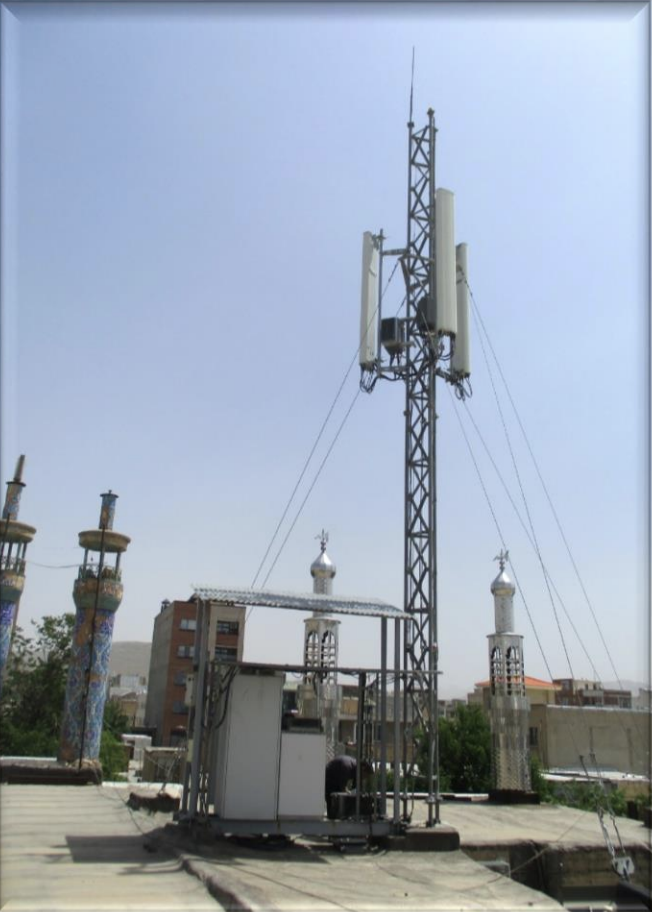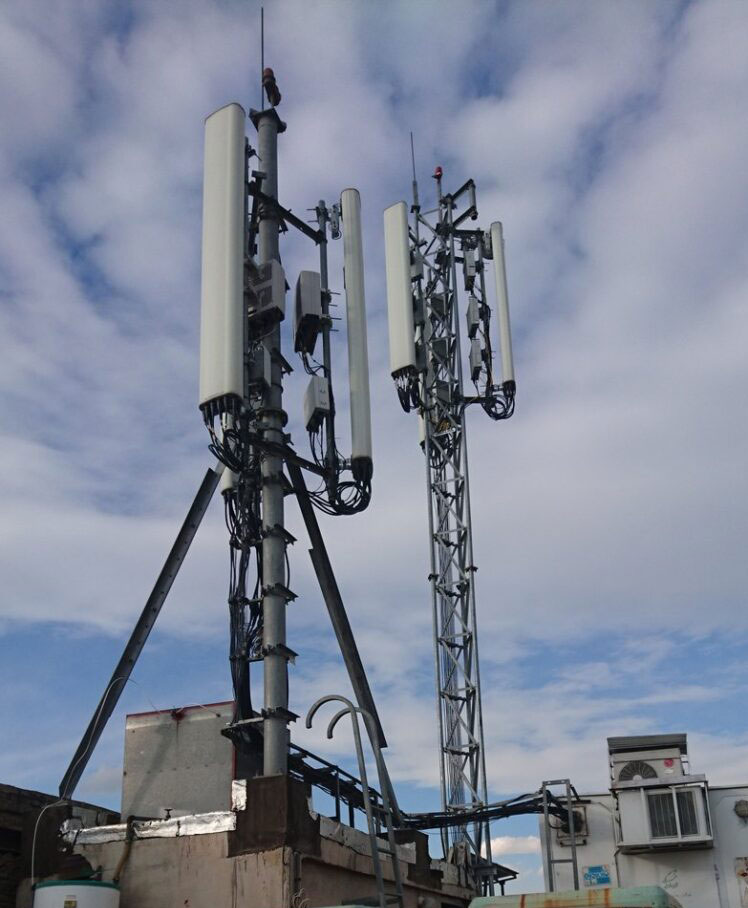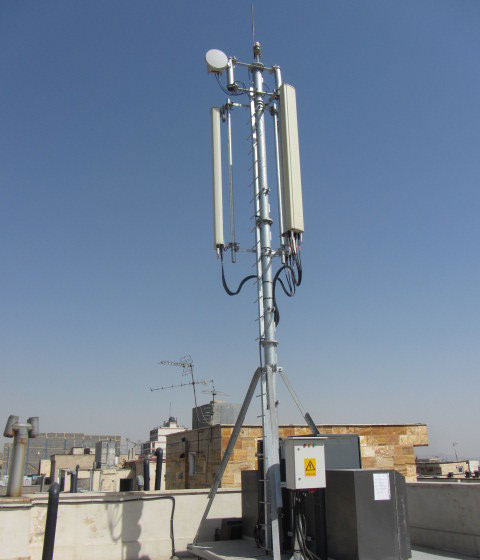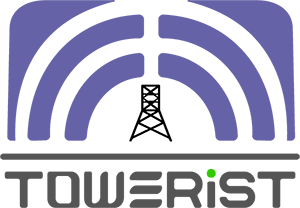Roof Top Towers
Guyed towers consist of a body or mast with a triangular, square, or solid circular cross-section that is mounted on a foundation with pin joints.
The components of these towers are made of rod elements with different cross-sections such as can, tube and angle sections, and to ensure the stability of the mast, it is restrained from around by steel cables connected to concrete foundations. For example, the braces are installed along the height of the tower at an angle of 45 degrees to its longitudinal axis in an guyed tower, and each brace has a separate foundation. In another case, a group of braces placed in the same plane are connected to a common foundation. Usually, in this case, the maximum deviation angle of the highest harness is 60 degrees to the horizon
Types of Roof Top Towers
Guyed Mast Telecom Towers
The main bases of the tower are made of corners and are guyed to the foundation by guy cables and must be installed on the roofs on the pillars of the building and they can be installed on the ground as well, which is called a guyed mast.
Scope of application of the guyed tower
These types of towers have the advantage of being installed on most buildings due to their low weight and the application of gravity forces by the tower and tensile forces by guys. These towers can be installed on the roof of houses and houses, etc., in addition to the fact that the height of the building contributes to the height of the antenna installation and has many advantages in urban areas.
Those towers are produced in the form of tripod with a 60-degree angle profile, and four legs with a standard angle profile. Its sections are 3 meters or 6 meters and can be used up to the required height.

Guyed mast components and accessories
The main legs of the mast:
- 3 meters or 6 meters according to the height of the mast and the type of equipment
- Guy cable and secondary connections
- Foundation supplies
- Bolts, anchor bolts, G-volts and other connections
- Grounding equipment, mast lights and related accessories
- Structures (mounting) of antenna, radio and installation equipment, rock feeders and vertical and horizontal ladders
The technical specifications of the types of anchoring rigs are:
- Body: Full Angle – non-welded
- The main axis of the mast: three- or four-sided
Angles of braces: 90 or 120 degrees - The height of the mast axis: 6 to 30 meters
- Load tolerance: 700 kg in the upper three meters
- Effective Projected Area (EPA): 2 to 12 square meters
- Maximum wind speed: 130 km/h
- The maximum height of the building where the mast is installed: 30 meters
- The minimum distance of the braces: from the axis of the mast is one third, and the maximum distance of the braces is two thirds of the height of the mast.
- The length of the separate parts that must be carried to the roof will not be more than three meters.

Brace Mast Telecom Towers
The main bases of the tower are made individually from a 60-degree angle or a 90-degree angle and are restrained by a tubular handle or an angle to the foundation and must be installed behind the roofs and on the building’s pillars, which is called a brace pole.
These towers are mainly produced in the form of tripods and quadrupeds with angle profiles and handles made of tubular or corner profiles. Its sections are 3 meters or 6 meters, and it can be used up to a height of 9 meters and in special cases that are designed separately for the relevant origin, up to a height of 12 meters.
Scope of application of the tower
These types of towers have advantages due to their low weight and are used in places where there is not enough space.
These towers have the ability to be installed on the roofs of houses and offices, in addition to the fact that the height of the building helps the height of the antenna installation, and it has many advantages in urban areas.
Each rooftop brace tower must include the following equipment and accessories.
- The main legs of the tower are 3 meters or 6 meters according to the height of the tower and the type of equipment
- Hands or sub-joints
- Foundation supplies
- Grounding equipment and tower lights and related accessories
- Structures (mounting) of antenna, radio and installation equipment, rock feeders and vertical and horizontal ladders
Pole Telecom Towers
Rooftop two-guyed masts (which are now called Rooftop Poles) are types of masts that are implemented and installed penetratingly on the roof structure and at the corner of the building.
These masts can be in two forms of Solid/Fix Guyed Masts, and are installed in two positions with an angle of 90 degrees to the mast axis.
The technical specifications of the tubular rooftop pole used in the telecommunications network are:
- The main axis of the mast: tubular
- Mast guy: corner or pipe (adjustable)
- Angles of braces: 90 degrees
- The height of the mast axis: 3 to 15 meters
- Load tolerance: 700 kg in the upper three meters
- Effective Projected Area (EPA): 2 to 12 meters
- Maximum wind speed: 130 km/h
- The maximum height of the building where the mast is installed: 30 meters
- The minimum distance of the braces from the axis of the mast is one third and the maximum distance of the braces is two thirds of the height of the mast.
- The length of the detached pieces that must be carried to the roof should not exceed three meters.

